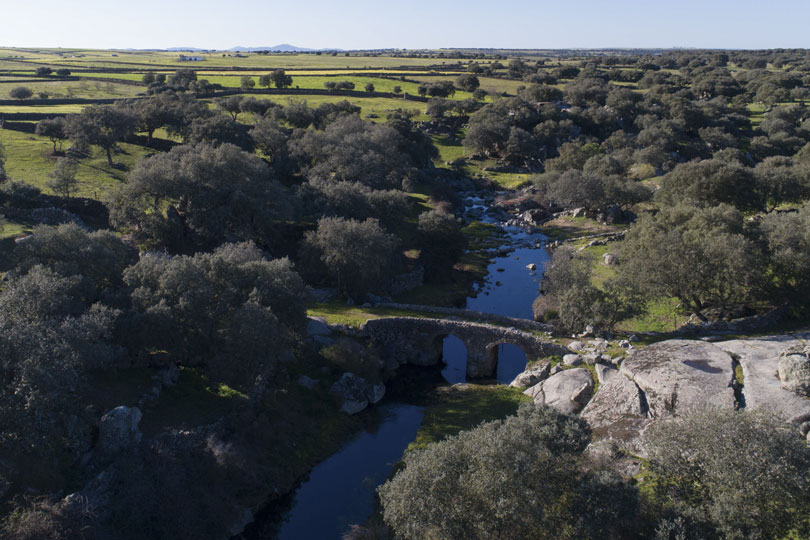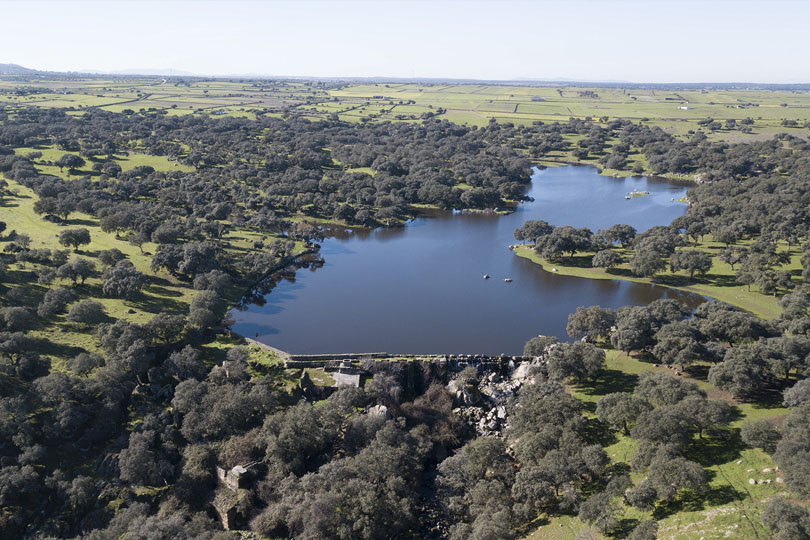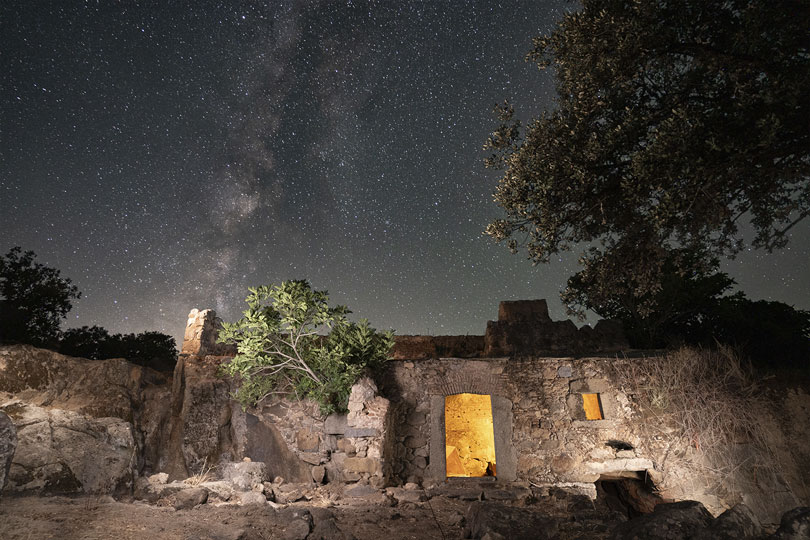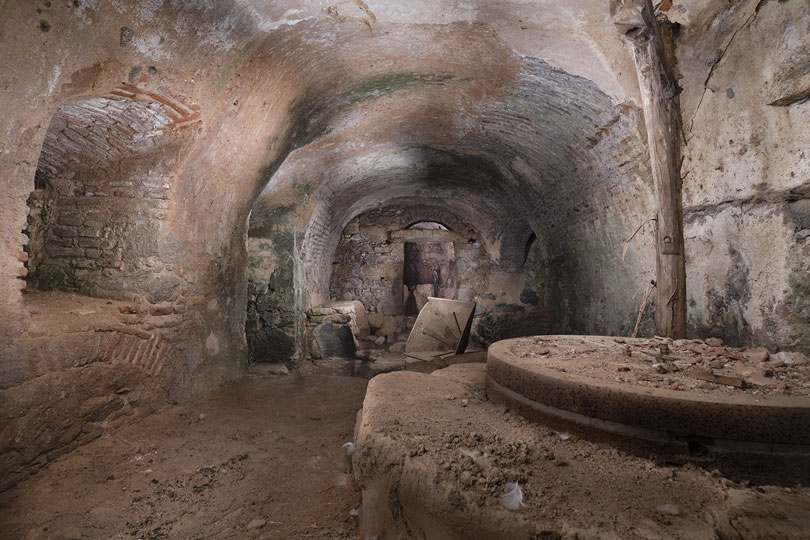Casillas Scenic Area
The passage of the Roman Empire through Valdefuentes left a large number of architectural elements that have reached us to a greater or lesser extent. An example of this is the location where we are now: the Rivero or Capellán Bridge.

Rivero or Capellán Bridge.
This place, of Roman origin and style consisting of two arches, is located over the Santa María River, also known as ‘La Pesquera’ or ‘Río Casillas’. Its source is in the Sierra de Montánchez, a tributary of the Tamuja, which joins near Botija, and flows into the Charca de Casillas, a water reservoir located on the border between Valdefuentes and Benquerencia.
The origin of the reservoir is uncertain, as the reservoir is in an advanced state of deterioration. However, thanks to the shape of the rosettes that are still preserved today, as well as some of the inscriptions carved on them indicating improvements and repair works that were being carried out, historians have been able to date this place to the late 18th and early 19th centuries.


The Charca de Casillas is also characterized by the surrounding fauna and flora. With a wide and diverse vegetation, it includes broom scrub, holm oaks in the higher areas, and numerous olive and fig trees. Regarding fauna, there is a wide variety of mammal, amphibian, and reptile species, including the short-toed snake eagle, fox, European otter, dormouse, hare, eyed lizard, spadefoot toad, ocellated lizard, and wild boar, among many others.
As for the use of water from the Charca de Casillas and the Santa María River, it is worth noting that residents used it not only to wash their clothes or other belongings but also to power flour mills located in areas with strong water currents. At one point, both the Santa María River and the Charca de Casillas powered up to six grinding stones.


Some of the most well-known mills include Tío Gabriel’s Mill, Aunt Victoria González’s Mill, the Two Stones Mill, the Redondo Family’s Mill, Félix Palomino’s Mill located above the reservoir, and María Rubio’s Mill located above the Capellán Bridge. Due to abandonment, the latter is in an advanced state of deterioration and is practically unrecognizable.
Likewise, there are also oil mills, whose historical origin dates back to the 16th century, of which the conical stones used to grind the olives, powered by a donkey or mule tirelessly turning a beam located in the center, are still preserved. The three most prominent oil mills in Valdefuentes are Tío Teófilo Merino’s, Arias’, and Donaires’.
